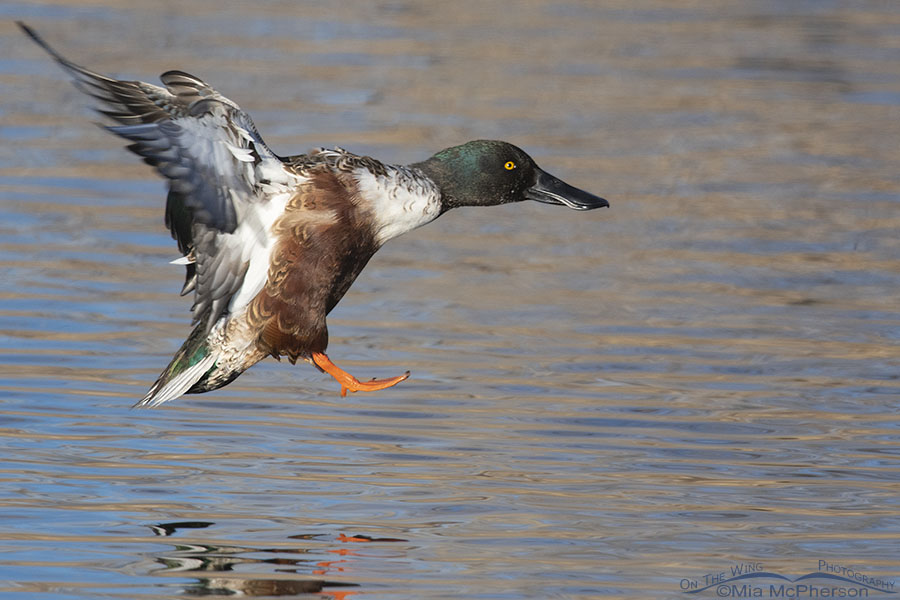 Drake Northern Shoveler landing on a pond – Nikon D500, f7.1, 1/2500, ISO 640, Nikkor 500mm VR with 1.4x TC, natural light
Drake Northern Shoveler landing on a pond – Nikon D500, f7.1, 1/2500, ISO 640, Nikkor 500mm VR with 1.4x TC, natural light
This morning I am sharing a simple photo of a drake Northern Shoveler landing on a chilly pond that I took in early December of last year. Ducks fly fast plus their flight pattern can be erratic so photographing them in flight or while they are landing has been and is an ongoing challenge for me. It can be even more of a challenge when using a vehicle as a mobile blind because that can limit my range of movement significantly at times.
I spotted this drake flying in to Glover Pond near the Eccles Wildlife Education Center and decided in a split second that I would try to photograph the shoveler as it landed on the water. I was able to get this one clear shot of the male shoveler landing before some annoying grasses got in the way.
Northern Shovelers can be found throughout much of North American during their breeding and nonbreeding season. Here in northern Utah they are year round residents that I get to see in both of their plumage phases plus the period in between which is called eclipse. In the eclipse phase shovelers can look pretty messy. I find Northern Shovelers on the ponds that are close to where I live from fall through early spring and also at Farmington Bay WMA, Bear River MBR, along the causeway to Antelope Island State Park, Lee Kay Ponds, plus other ponds near ranches and farms as well as on urban water features.
Not long after I moved to Utah I heard a man at Lee Kay Ponds call Northern Shovelers “Spoonies” which at first I couldn’t wrap my head around because I was a recent transplant from Florida. In Florida when someone says “Spoonies” they are usually referring to Roseate Spoonbills which are large, pink wading birds that look nothing like a Northern Shoveler. Both species do have spatulate shaped bills and Northern Shovelers are found in Florida during their nonbreeding season. Now when I hear someone say “Spoonies” I immediately think of both species.
Life is good.
Mia
Click here to see more of my Northern Shoveler photos plus facts and information about this species.


Beautiful photo. I think because they are common here in Utah they get overlooked.
Haley was working in an exhibit at Tracy Aviary with the ducks where she was shoveling the dirt and landscape. She had a visitor come up to her and ask what kind of bird she was, Haley has long red hair. Haley answered the visitor “Northern redheaded shoveler.” The visitor did not get it but her coworkers were rolling on the ground with laughter.
What a handsome, handsome drake! I especially like his body position and those bright orange outstretched feet. Fabulous shot!
What a brilliant capture. Thank you. And how I wish that I saw either ‘spoony’.
Wonderful flight shot.
Another incredibly beautiful capture Mia!
Great action shot! Lucky you!